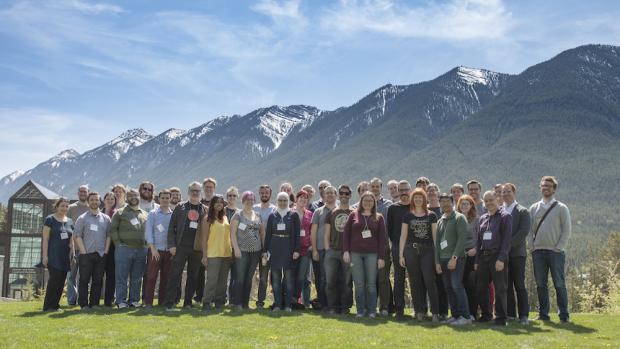Using Computational Models to Design Better Games

The Banff International Research Station (BIRS) may be located in a picturesque resort area of Alberta, Canada, but that bucolic setting belies its core mission: to encourage collaborative, cross-disciplinary research with a focus on the mathematical sciences and their applications. Scientists and mathematicians from around the world vie to hold workshops at the notoriously selective facility, and in May of this year Assistant Professor of Computer Science Andy Nealen, who also co-directs the Game Innovation Lab, was chosen to present "Computational Modeling in Games.” The multi-day conference brought together academics well-versed in researching computational models and paired them with game designers, allowing for design problems to be approached using formal modeling techniques.
Along with co-organizer Michael Mateas of the University of California, Santa Cruz, Nealen curated the varied group of participants. “We wanted to have a diverse group in order to avoid an echo-chamber effect,” he said. “It has an enormous impact on peoples’ thinking when they’re brought together under one roof to brainstorm with those from other sectors. There were some designers who were initially confused about getting asked to attend an event at a research facility focused on the mathematical sciences, but that’s how you bridge gaps. This was no ivory-tower conference.”
Devising good computational models allows researchers to better explain and predict the effect of a design decision, Nealen says, and that can be of great use to designers, who otherwise find themselves working in something of a vacuum. “Unlike design fields such as architecture, in which the artistry of design is complemented by mathematically rigorous analysis and predictive modeling carried out by CAD (Computer-Aided Design) systems, mainstream game designers make use of no formal modeling and mathematical analysis during the design process, instead depending on developing rapid prototypes and gathering informal feedback from players and the design team playing the prototypes,” Nealen and Mateas wrote, explaining the impetus for the event. “This results in the game designer being able to explore only a small fraction of the design space, missing out on innovative new rule systems and approaches. Even worse, it means that completed games often ... fail to achieve their design goals with the target audience [such as when they end up being either too easy or too hard to master].”
Nealen and Mateas predict that the field of computational modeling as a whole will benefit from the type of interdisciplinary efforts they are making. “Predictive models rely on context, and without context there can be no model,” they wrote. “And while our focus is on game design as a discipline, we envision our system/player-centric approach to design ... to have repercussions in all other design fields.”


